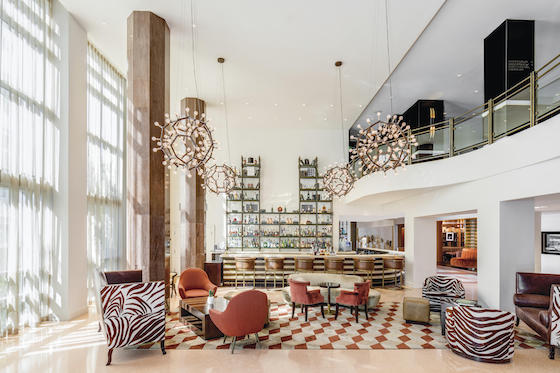Upgrading a hotel’s technology infrastructure, whether as part of the guest experience or for the back of the house, may cause more than a few hoteliers to groan these days. As technology evolves, IT infrastructure can quickly become inefficient. (Chances are, most hotel infrastructures are already inefficient.) And owners may be reluctant to make another significant investment when they could have to pony up more dollars in just a few years.
Enter future-proofing. Used in industries such as architecture, engineering and energy conservation, this strategy predicts trends and develops solutions that can work when needed.

For hotels, future-proofing IT systems comes down to one simple objective — a strong, fast and secure wireless network.
“We tell our hotel owners, ‘Let’s not skimp on the infrastructure,’” says John Edwards, chief information officer at RLH Corp., Denver. “Because it can really cripple us when we look at changes that we need to make in the future.
“When they say why should we spend another 10 grand on our WiFi networks, we say, ‘Look, there are just certain things that cheaper solutions can’t do.’ And three years from now, that’s really going to be a problem.”
‘Self-explanatory’
Miami-based Menin Hospitality has significantly upgraded the tech infrastructure at its properties with future-proofing as a top priority. That includes moving core systems to the cloud, adding WiFi access points in every guest room on an interference-free 5GHZ band, moving to a EMV/chip system for credit cards, mobile keys, and as a fun entertainment for guests, the services of Shelly, a delivery robot at The Shelbourne in South Beach.
“The benefits (of future-proofing) are self-explanatory,” says Jared Galbut, Menin’s managing principal. “Systems work as expected, business doesn’t grind to a halt, our guests are happy and they have a better tech and media experience at our properties than they would at home.”
At MacArthur Place, a historic hotel in Sonoma, California, that is about to be remodeled for the first time in 20 years, technology upgrades will feel like a “natural extension” of the guest experience.
“We will only implement technology that our guests are not only familiar with but that have been tried and tested,” says Justin Bain, director of marketing and brand management at IMH, an Arizona-based real estate investment company that has acquired the hotel. “There is nothing worse than a technology experience gone bad.”
When it comes to the all-important WiFi network, Bain says the hotel is emphasizing data transfer, for guests and meetings. “We are installing a system that can handle four to five times more guests than we can accommodate,” he says. “It’s also extremely scalable, so that when we have large groups we can crank it up to make sure that the WiFi stays stable.”
Reducing complexity
Aside from investing in the wireless network, hotels should reduce the complexity of their systems. RLH Corp., which is shifting to a largely franchised operation, has made this a priority for hotels and owners. Edwards says they are focusing on maximizing a hotel’s existing tools and technology rather than replacing or adding to them.
For example, “we have no plans to add iPads. If I add an iPad in every room, the level of complexity is added to everything from operations to the guest experience. It’s almost exponential,” Edwards explains. “By adding that one iPad, I have a different WiFi infrastructure that I need to build for. I have a different housekeeping plan. I have a different maintenance plan. I have a guest that needs to learn how to work this. Why would I do that? Aren’t guests bringing two to three?devices of their own? So my WiFi infrastructure needs to handle that.”
Yet even the WiFi network doesn’t need to be thrown out with last decade’s furniture and linens.
“It’s not about overhauling the WiFi network. It’s redesigning it,” Edwards says. “It’s changing the way we leverage those assets that are already in the hotel.”
But don’t go overboard
“The place where cost becomes a concern is adding more systems than there previously were,” Menin Hospitality’s Galbut explains. “So before, you needed just email, but now you need email and cyber security solutions for messaging. Before you needed conference rooms and a conference phone, and now you need a video conference solution. For us, a cable modem used to be enough for back of house, and now a fiber connection works, but then we needed a separate fiber connection for guest services and, of course, a third in case any of the primary ones fail.”
Still, Galbut says as long as a hotel picks the right vendor or technology?partner, the costs can be minimal.
Learning when to say ‘no’ is important, too. “The temptation of not trying to jump the gun on technology is challenging,” Bain says. “Voice, artificial intelligence, biometric, they are all things we are looking at. But it’s so important that the technology doesn’t feel forced, and again, it must work perfectly.”
RLH Corp. is concentrating on minimizing the impact of changes on guests and owners by communicating what’s happening – and why it’s necessary. “Change is more accepted by our guests than we give them credit for, if the change is communicated correctly,” Edwards says. “And that’s a big part of the future-proofing process for us as an organization.”
